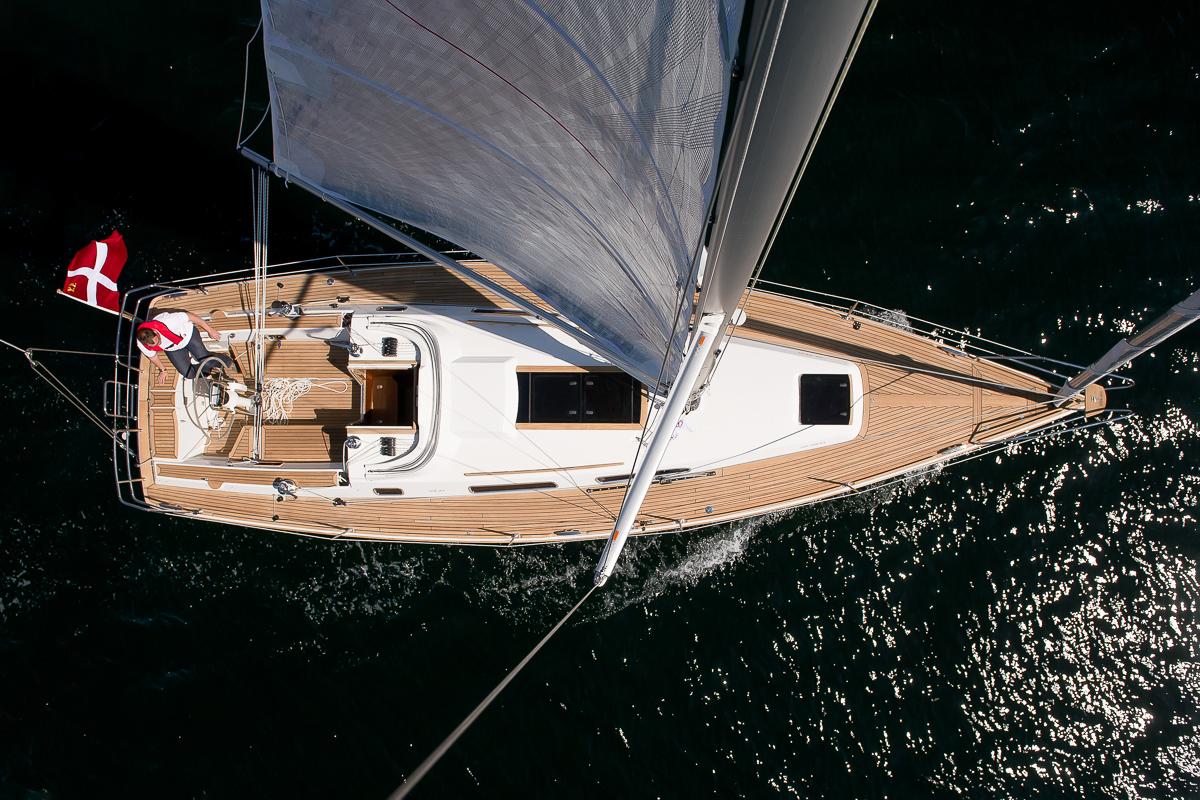Specification
Faurby 400
The Faurby 400 offers excellent space below, giving a greater feeling of luxury and providing more options to customise the interior, tailoring it precisely to your own style of sailing. Everywhere on board has the feeling of space. The forward cabin has more room and extra stowage; an offset seat to aid dressing and more space for your possessions, while beneath the cockpit, her freeboard allows for more freedom of design in the aft accommodation.
The saloon can be styled to your desires, enabling you to choose the size, style and wood the interior is crafted in. The space in the saloon lends itself to long L-shaped seating to port while to starboard can be a long straight bench seat. Both of these make excellent on-passage berths, low down and close to the yacht’s centreline where the yacht’s motion at sea is most comfortable. Overhead in the saloon, twin hatches let in more light than a single hatch and provide more effective ventilation.
The galley offers an abundance of usable worktop space and stowage, giving the cook all the space they need to create meals whether in port or at sea.
In the cockpit, you can choose between a wheel or tiller as well as having increased stowage with lazarette lockers, or easier access and more crew space by choosing our open-transom design. Like all Faurby yachts she is designed to be sailed by a couple, so even when you’re on deck alone you can easily reach and adjust all the sail controls from the safety of the cockpit.


















